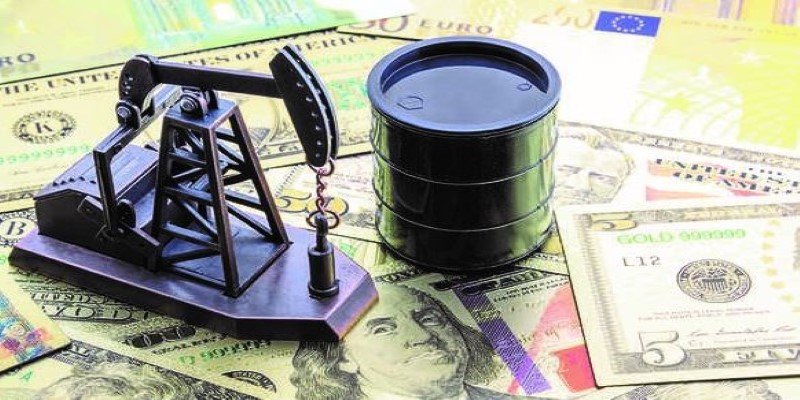Advertisement
Governments sometimes introduce a windfall tax when oil companies earn unusually high profits during times of price spikes. This tax, aimed at collecting additional revenue from companies benefiting from market volatility, has a direct impact not only on corporate earnings but also on crude oil prices. While it may seem like a straightforward policy move, its influence on global oil markets is layered and far-reaching. Both producers and consumers feel the ripple effects, and understanding how a windfall tax shapes price trends is useful for anyone following energy markets.
A windfall tax is imposed on the profits oil producers earn above a set threshold during periods of soaring crude prices. Policymakers argue these profits stem not from improved efficiency or innovation but from external factors such as geopolitical tensions, supply shortages, or sudden demand surges. From the government's perspective, it redistributes unexpected corporate gains toward public spending.
For oil producers, however, the tax raises operating costs and reduces net margins. This disincentivizes additional production or investment in exploration, especially when the price environment is already unpredictable. Producers may also pass part of this cost along the supply chain, subtly affecting the price at which crude oil is sold. The secondary keyword, "energy market policy," often comes into play here, as such taxes reflect broader government strategies in balancing revenues with long-term energy security.
One of the most significant ways windfall taxes impact crude oil prices is by altering supply dynamics. When oil companies anticipate lower profits due to extra taxation, they may scale back on planned drilling projects or delay investments in maintenance and upgrades. Reduced investment means output may decline over time, tightening supply in an already constrained market. When global supply shrinks while demand remains steady or increases, prices tend to rise.

This reduction in production is particularly pronounced in regions where operating costs are already high. North Sea producers, for example, have historically faced narrow profit margins compared to Middle Eastern counterparts. For them, a windfall tax can tip the balance, making certain fields economically unviable. The result is a measurable drop in supply to international markets, which exerts upward pressure on crude oil prices. Energy market policy decisions like this create a feedback loop: taxing profits meant to temper inflation can end up making oil more expensive for everyone.
Markets tend to react quickly to policy announcements. When a windfall tax is introduced or even proposed, traders anticipate its effects on supply and adjust their expectations accordingly. Futures contracts may rise as the market prices in the likelihood of reduced output. Investors may also move money out of oil stocks, pushing up the cost of capital for producers and adding to their reluctance to expand production.
This heightened uncertainty contributes to price volatility. In the short term, crude oil prices might dip if traders believe the tax will suppress demand by raising costs down the line. But over a longer horizon, the supply constraints often outweigh initial sentiment, sending prices higher. Moreover, companies may try to accelerate exports ahead of the tax taking effect, creating temporary fluctuations in availability and prices. Energy market policy plays a quiet yet powerful role in shaping these market reactions.
In global terms, the impact of a windfall tax varies by country. In major producing nations where state-owned firms dominate and production costs are low, the effect on output may be limited. However, in regions where private companies carry much of the burden, the policy can chill investment more quickly, amplifying supply issues. This uneven response contributes to imbalances across different crude grades and benchmarks, further muddying price trends.
Beyond immediate market movements, windfall taxes can reshape the oil industry's landscape over the years. For producers, repeated exposure to such policies may lead to structural underinvestment in exploration and production. When capital spending falls below levels needed to offset natural declines in output, global supply tightens over the long term, creating an upward bias in prices. This underinvestment becomes even more pronounced during times when demand remains strong or grows unexpectedly.

For consumers, higher crude oil prices translate into higher fuel costs and increased inflationary pressure in other sectors. Governments then face a dilemma: while the tax raises revenue that can support households and social programs, it risks worsening the very price pressures it seeks to address. Energy market policy in this context becomes a balancing act between short-term fiscal needs and long-term economic stability.
Producers may also look for ways to shield themselves from such taxes by shifting operations to jurisdictions with more favorable tax regimes. This movement of capital and expertise can erode domestic production capacity in countries where windfall taxes are imposed, further contributing to supply constraints. Over time, this shift reshapes global trade patterns and may give a competitive edge to producers in untaxed regions, creating more pronounced disparities in the market.
The introduction of a windfall tax on oil profits can have a profound effect on crude oil prices, shaping supply decisions, investment patterns, and market sentiment. While intended as a tool to redistribute gains during periods of high prices, it often adds layers of complexity to an already delicate market. Reduced production, higher volatility, and longer-term underinvestment all feed into the pricing mechanisms of crude oil, with consequences that reach far beyond the companies targeted by the policy. Energy market policy choices like these illustrate how closely government action and commodity prices are tied, often in ways that defy simple cause-and-effect assumptions. Both producers and consumers ultimately pay the price of such decisions, making it a topic that deserves careful consideration.
Advertisement

Plan Glacier National Park visit with tips on permits, trails, shuttles, lodging, gear essentials, and wildlife safety.

Plan a summer trip to Coastal Georgia’s islands with tips for lodging, sunny beaches, trails, dining, and family fun!

Explore the evolution of banking in India, tracing its journey from informal moneylenders to a modern, technology-driven system that promotes financial inclusion and accessibility

Discover the top 12 things to do in Honolulu, from scenic hikes to markets, coastal walks, and tropical garden visits.

Navigate all NYC airports with ease using this traveler’s airport guide for smooth connections.

Explore the best low-rate savings account alternatives to help your money grow faster without taking big risks. Learn smarter ways to save and earn more

Use this helpful guide to explore Louisville, Kentucky using public transport and walking.

Discover Los Angeles through its best neighborhoods, filled with culture, food, art, and unique stories.

How to calculate savings account interest with clear, simple steps. Understand how your balance, rate, and compounding affect your earnings, and use a savings interest calculator for quick estimates

Experience the vibrant art scene in Miami through museums, galleries, street murals, and studios.

Discover 11 scenic and stress-free day trips from Rome, from lakes and spas to hill towns and beach escapes.

Want to teach your kids about investing but don’t know where to start? This clear, practical guide helps parents build a strong financial foundation early—no jargon, just real-life steps that work